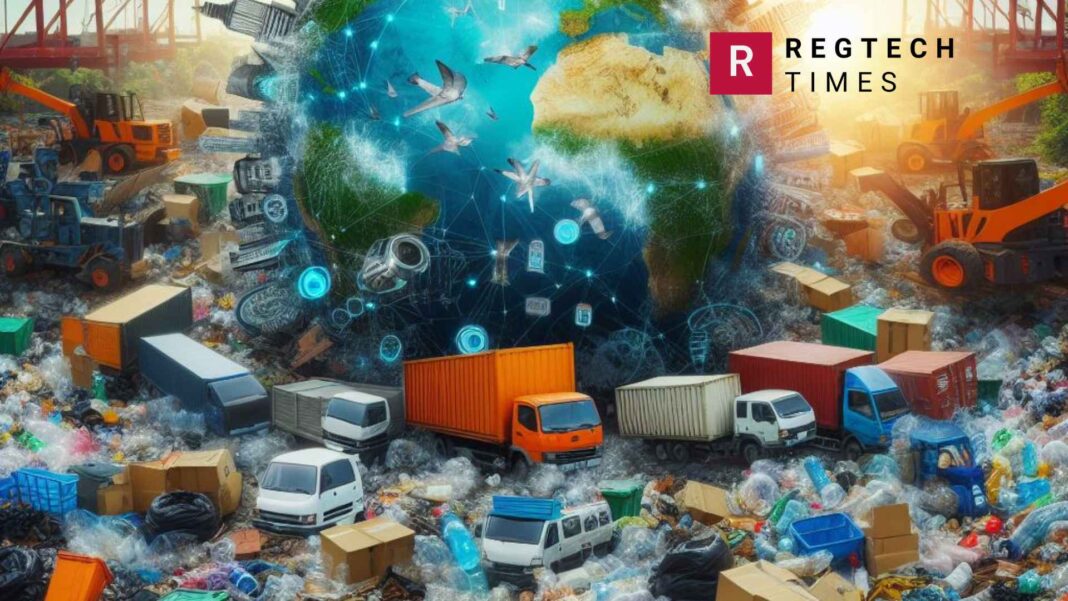Waste trafficking, a clandestine trade raking in billions of dollars annually, presents a formidable obstacle to global sustainability assists states in enacting or strengthening domestic legislation against waste trafficking.
Understanding Waste Trafficking
Waste trafficking, also known as the illegal trade of waste, is a highly profitable yet illicit activity that generates billions of dollars annually. This clandestine trade poses significant challenges to global efforts towards sustainability and environmental protection. It is one of the important components of Trade-Based Money Laundering.
How Does Waste Trafficking Work?
Waste regulations vary widely across borders, creating loopholes that criminal actors exploit to conduct their illicit activities. They often disguise illegal waste exports within legitimate channels, such as falsely declaring hazardous waste as non-hazardous or bribing officials to bypass regulations. Additionally, waste trafficking has evolved into a cyber-enabled crime, with e-commerce platforms facilitating illegal transactions.
Techniques of Waste Trafficking
Waste trafficking involves a range of techniques and strategies criminals employ to facilitate the illegal trade of waste across borders. Five common techniques used in waste trafficking include:
Falsifying Documentation
Criminals may falsify customs declarations or other official documents to misrepresent the nature, quantity, or destination of the waste being transported. By providing false information on paperwork, they attempt to conceal the illicit nature of the waste shipment and avoid detection by authorities.
Mislabeling and Concealment
Waste traffickers may mislabel containers or packaging to disguise the contents of the shipment. For example, they may label hazardous waste as non-hazardous or falsely declare waste as recyclable materials. Additionally, criminals may conceal illegal waste within legitimate cargo shipments to evade detection during transit.
Bribery and Corruption
Corruption is a common tactic used by waste traffickers to bypass regulatory controls and facilitate the movement of illegal waste. They may bribe customs officials, port authorities, or other regulatory personnel to turn a blind eye to illicit activities or expedite the clearance process for illegal shipments.
Transshipment and Smuggling
Waste traffickers may exploit loopholes in international trade routes by transshipping illegal waste through intermediary countries or smuggling it across borders. By leveraging complex supply chains and exploiting weak enforcement mechanisms in certain regions, they seek to evade detection and enforcement efforts.
Cyber-Enabled Crime
With the rise of digital technology, waste traffickers may use online platforms and digital marketplaces to facilitate illegal transactions. Cyber-enabled crime allows criminals to coordinate waste trafficking activities, communicate with potential buyers or sellers, and arrange illicit shipments discreetly.
Where Does Waste Trafficking Occur?
Illegal waste primarily flows from wealthier countries in Europe, North America, and Asia to middle and lower-income countries in Southeast Asia, South Asia, and Africa. This flow of illegal waste poses significant risks to human health, ecosystems, and the economies of destination countries.
The Impact of Waste Trafficking
Illegal waste disposal in destination countries can lead to severe environmental degradation, including pollution of oceans, soil, and air, as well as damage to ecosystems. Burning of illegal waste releases toxic chemicals, posing health risks to nearby communities. Moreover, waste trafficking undermines the transition to a circular economy by hindering the reuse and repurposing of materials, thereby perpetuating the demand for raw materials.
In 2006, the Panama-registered ship Probo Koala dumped 500 tonnes of toxic waste in Abidjan, Côte d’Ivoire, including oil residues, at the port of Abidjan. The local company, Compagnie Tommy, that Trafigura hired to dispose of it dumped the waste in at least 18 locations in and around the city on August 19, 2006. The population didn’t know what was happening for almost three weeks. The BBC reported that 17 people died, 23 were hospitalized, and 40,000 sought medical treatment. The Ivorian government reported that 17 people died, dozens were severely ill, and 30,000 were affected.
UN Initiatives to Combat Waste Trafficking
To address this pressing issue, the United Nations Office on Drugs and Crime (UNODC) has developed a Legislative Guide on Waste Trafficking to assist states in enacting or strengthening domestic legislation. Furthermore, the UNODC’s Unwaste project in Southeast Asia, funded by the European Union (EU) and implemented in cooperation with the UN Environment Programme (UNEP), aims to promote the transition towards a circular economy.
In conclusion, waste trafficking represents a significant threat to global sustainability and environmental well-being. Through international cooperation and concerted efforts, it is imperative to combat this illicit trade and safeguard our planet for future generations.



